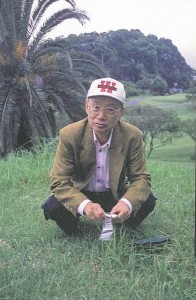On September 18 I sent a message to the Wesleyan community on the plight of refugees from Syria (and elsewhere) struggling to make their way to safety, asking for ideas on what we Wesleyans could do. I want to thank all those who responded with recommendations and expressions of support (as well as some cautions). I asked Professor Rob Rosenthal, Director of the Allbritton Center for the Study of Public Life, and Charles Salas, Director of Strategic Initiatives, to review the responses received and come up with a plan. They quickly discovered that our current students – Colfax Phillips ’16 and Casey Smith ’17 in particular – were a step ahead, having independently formed a student group called the Wesleyan Refugee Project (WRP). It is especially gratifying to me that our students have proved to be enormously helpful in developing the university plan. The plan consists of four tactics:
1. Facilitate the efforts of students to support current resettlement organizations in person and on-line – (for instance, through internships)
The WRP has been (1) coordinating volunteer efforts for Wesleyan students at Integrated Refugee and Immigrant Services (IRIS) in New Haven weekly, helping refugees from Syria, Iraq, Afghanistan, and other countries access social services; (2) setting up Wesleyan students to tutor Syrian refugees in ESL remotely via Skype through the organization Paper Airplanes; and (3) working with the International Refugee Assistance Project (located in Washington, D.C.) through which Wesleyan volunteers can electronically help Iraqi and Afghan refugees complete their applications to refugee resettlement programs. The University has offered to facilitate these efforts in any way we can.
One way to help is to create internships for students eager to undertake efforts like these, and we have agreed to do just that. I understand word is spreading among students interested in working with IRIS and other organizations, and staff from the Career Center and the Center for Global Studies have also been reaching out to organizations dealing with refugees that might be interested in hosting interns.
2. Mount on-campus series of speakers
Raising awareness of the issues and their complexity is another thing our university can do. We had a number of good suggestions for speakers from Cole and Casey of the WRP, and Rob is planning to put together a series of three panels in February, each of which involves experts from outside campus and within. Provisional titles: Panel 1: The development of the crisis and the response in Europe; Panel 2: The refugee experience; and Panel 3: The U.S. response, locally and nationally.
3. Support student/faculty refugees here on campus
We have been in contact with the Institute of International Education (IIE) about bringing a student refugee to Wesleyan, and Wesleyan (WRP) students are exploring possibilities based upon their own contacts abroad. As the IIE told us, “Higher education is often described as the orphan of every conflict. Your willingness to host a Syrian student will play a crucial role in avoiding a lost generation and providing young Syrians with the skills and education they need to play a vital role in rebuilding their country when the time is ready.” The Admissions office will help ensure that the student(s) we bring are equipped to make the most of what we offer.
Wesleyan is a member of the Scholars at Risk (SAR) network, which is “dedicated to protecting threatened scholars, preventing attacks on higher education communities and promoting academic freedom worldwide.” We are exploring with SAR the possibility of bringing a Syrian refugee scholar to be in residence here, possibly at our Center for the Humanities.
4. Convene Middletown church and nonprofit group to create city plan for infrastructure to take in refugees.
We had a number of encouragements (and some cautions) in this regard from alumni, and Cathy Lechowicz, Director of the Center for Community Partnerships, is exploring the possibilities. Something like this, of course, even if deemed viable, will take some time to arrange.
There are, of course, a great many organizations working to help refugees worthy of our support. Three with Wesleyan connections are RefugePoint, founded by Sasha Chanoff ’94 (recently honored at the White House); Welcoming America, led by David Lubell ’98; and the considerably smaller Collateral Repair Project, a refugee aid NGO based in Amman, Jordan, where Cole volunteered last year and Casey volunteers now.
Some will wonder if it is “our business” to crowd source ideas on this topic (or any political/social issue). I believe our educational resources can make a positive difference in this arena, and that our commitment to practical idealism demands that we explore the possibilities. I’m gratified by the responses to my September 18 call for ideas, and I’m impressed by the efforts of the Wesleyan community in seeking to turn at least some of those ideas into concrete actions.
I’ll report back again on concrete steps we are taking in these areas.





